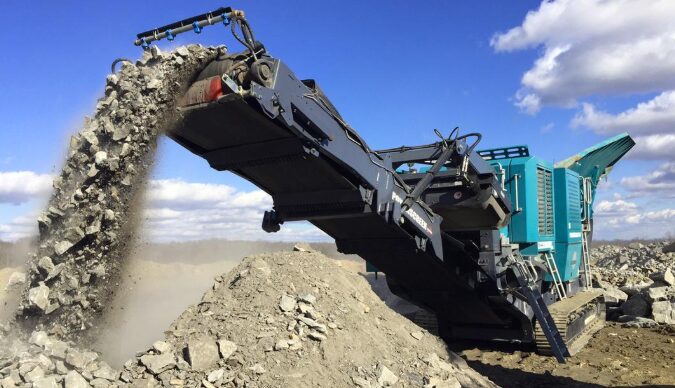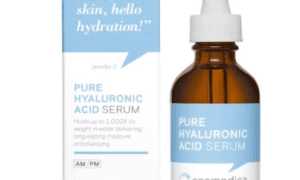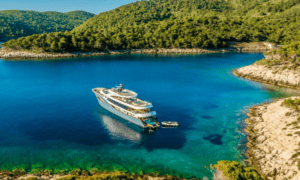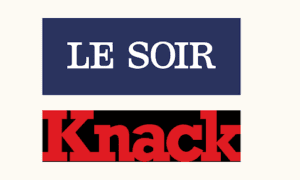content and backlinks removed due to scam
contact: lowsadventure@gmail.com
contact: lowsadventure@gmail.com
contact: lowsadventure@gmail.com
contact: lowsadventure@gmail.com
contact: lowsadventure@gmail.com
contact: lowsadventure@gmail.com
contact: lowsadventure@gmail.com
contact: lowsadventure@gmail.com
contact: lowsadventure@gmail.com
contact: lowsadventure@gmail.com
contact: lowsadventure@gmail.com
contact: lowsadventure@gmail.com
contact: lowsadventure@gmail.com
contact: lowsadventure@gmail.com
contact: lowsadventure@gmail.com
contact: lowsadventure@gmail.com
contact: lowsadventure@gmail.com
contact: lowsadventure@gmail.com
contact: lowsadventure@gmail.com
contact: lowsadventure@gmail.com
contact: lowsadventure@gmail.com
contact: lowsadventure@gmail.com
contact: lowsadventure@gmail.com
contact: lowsadventure@gmail.com
contact: lowsadventure@gmail.com
contact: lowsadventure@gmail.com
contact: lowsadventure@gmail.com
contact: lowsadventure@gmail.com
contact: lowsadventure@gmail.com
contact: lowsadventure@gmail.com
contact: lowsadventure@gmail.com
contact: lowsadventure@gmail.com
contact: lowsadventure@gmail.com
contact: lowsadventure@gmail.com
contact: lowsadventure@gmail.com
contact: lowsadventure@gmail.com
contact: lowsadventure@gmail.com
contact: lowsadventure@gmail.com
contact: lowsadventure@gmail.com
contact: lowsadventure@gmail.com
contact: lowsadventure@gmail.com
contact: lowsadventure@gmail.com
contact: lowsadventure@gmail.com
contact: lowsadventure@gmail.com
contact: lowsadventure@gmail.com
contact: lowsadventure@gmail.com
contact: lowsadventure@gmail.com
contact: lowsadventure@gmail.com
contact: lowsadventure@gmail.com
contact: lowsadventure@gmail.com
contact: lowsadventure@gmail.com
contact: lowsadventure@gmail.com
contact: lowsadventure@gmail.com
contact: lowsadventure@gmail.com
contact: lowsadventure@gmail.com
contact: lowsadventure@gmail.com
contact: lowsadventure@gmail.com
contact: lowsadventure@gmail.com
contact: lowsadventure@gmail.com
contact: lowsadventure@gmail.com
contact: lowsadventure@gmail.com
contact: lowsadventure@gmail.com
contact: lowsadventure@gmail.com
contact: lowsadventure@gmail.com
contact: lowsadventure@gmail.com
contact: lowsadventure@gmail.com
contact: lowsadventure@gmail.com
contact: lowsadventure@gmail.com
contact: lowsadventure@gmail.com
contact: lowsadventure@gmail.com
contact: lowsadventure@gmail.com
contact: lowsadventure@gmail.com
contact: lowsadventure@gmail.com
contact: lowsadventure@gmail.com
contact: lowsadventure@gmail.com
contact: lowsadventure@gmail.com
contact: lowsadventure@gmail.com
contact: lowsadventure@gmail.com
contact: lowsadventure@gmail.com
contact: lowsadventure@gmail.com
contact: lowsadventure@gmail.com
contact: lowsadventure@gmail.com
contact: lowsadventure@gmail.com
contact: lowsadventure@gmail.com
contact: lowsadventure@gmail.com
contact: lowsadventure@gmail.com
contact: lowsadventure@gmail.com
contact: lowsadventure@gmail.com
contact: lowsadventure@gmail.com
contact: lowsadventure@gmail.com
contact: lowsadventure@gmail.com
contact: lowsadventure@gmail.com
contact: lowsadventure@gmail.com
contact: lowsadventure@gmail.com
contact: lowsadventure@gmail.com
contact: lowsadventure@gmail.com
contact: lowsadventure@gmail.com
contact: lowsadventure@gmail.com
contact: lowsadventure@gmail.com
contact: lowsadventure@gmail.com
contact: lowsadventure@gmail.com
contact: lowsadventure@gmail.com
contact: lowsadventure@gmail.com
contact: lowsadventure@gmail.com
contact: lowsadventure@gmail.com
contact: lowsadventure@gmail.com
contact: lowsadventure@gmail.com
contact: lowsadventure@gmail.com
contact: lowsadventure@gmail.com
contact: lowsadventure@gmail.com
contact: lowsadventure@gmail.com
contact: lowsadventure@gmail.com
contact: lowsadventure@gmail.com
contact: lowsadventure@gmail.com
contact: lowsadventure@gmail.com
contact: lowsadventure@gmail.com
contact: lowsadventure@gmail.com
contact: lowsadventure@gmail.com
contact: lowsadventure@gmail.com
contact: lowsadventure@gmail.com
contact: lowsadventure@gmail.com
contact: lowsadventure@gmail.com
contact: lowsadventure@gmail.com
contact: lowsadventure@gmail.com
contact: lowsadventure@gmail.com
contact: lowsadventure@gmail.com
contact: lowsadventure@gmail.com
contact: lowsadventure@gmail.com
contact: lowsadventure@gmail.com
contact: lowsadventure@gmail.com
contact: lowsadventure@gmail.com
contact: lowsadventure@gmail.com
contact: lowsadventure@gmail.com
contact: lowsadventure@gmail.com
contact: lowsadventure@gmail.com
contact: lowsadventure@gmail.com
contact: lowsadventure@gmail.com
contact: lowsadventure@gmail.com
contact: lowsadventure@gmail.com
contact: lowsadventure@gmail.com
contact: lowsadventure@gmail.com
contact: lowsadventure@gmail.com
contact: lowsadventure@gmail.com
contact: lowsadventure@gmail.com
contact: lowsadventure@gmail.com
contact: lowsadventure@gmail.com
contact: lowsadventure@gmail.com
contact: lowsadventure@gmail.com
contact: lowsadventure@gmail.com
contact: lowsadventure@gmail.com
contact: lowsadventure@gmail.com
contact: lowsadventure@gmail.com
contact: lowsadventure@gmail.com
contact: lowsadventure@gmail.com
contact: lowsadventure@gmail.com
contact: lowsadventure@gmail.com
contact: lowsadventure@gmail.com
contact: lowsadventure@gmail.com
contact: lowsadventure@gmail.com
contact: lowsadventure@gmail.com
contact: lowsadventure@gmail.com
contact: lowsadventure@gmail.com
contact: lowsadventure@gmail.com
contact: lowsadventure@gmail.com
contact: lowsadventure@gmail.com
contact: lowsadventure@gmail.com
contact: lowsadventure@gmail.com
contact: lowsadventure@gmail.com
contact: lowsadventure@gmail.com
contact: lowsadventure@gmail.com
contact: lowsadventure@gmail.com
contact: lowsadventure@gmail.com
contact: lowsadventure@gmail.com
contact: lowsadventure@gmail.com
contact: lowsadventure@gmail.com
contact: lowsadventure@gmail.com
contact: lowsadventure@gmail.com
contact: lowsadventure@gmail.com
contact: lowsadventure@gmail.com
contact: lowsadventure@gmail.com
contact: lowsadventure@gmail.com
contact: lowsadventure@gmail.com
contact: lowsadventure@gmail.com
contact: lowsadventure@gmail.com
contact: lowsadventure@gmail.com
contact: lowsadventure@gmail.com
contact: lowsadventure@gmail.com
contact: lowsadventure@gmail.com
contact: lowsadventure@gmail.com
contact: lowsadventure@gmail.com
contact: lowsadventure@gmail.com
contact: lowsadventure@gmail.com
contact: lowsadventure@gmail.com
contact: lowsadventure@gmail.com
contact: lowsadventure@gmail.com
contact: lowsadventure@gmail.com
contact: lowsadventure@gmail.com
contact: lowsadventure@gmail.com
contact: lowsadventure@gmail.com
contact: lowsadventure@gmail.com
contact: lowsadventure@gmail.com
contact: lowsadventure@gmail.com
contact: lowsadventure@gmail.com
contact: lowsadventure@gmail.com
contact: lowsadventure@gmail.com
contact: lowsadventure@gmail.com
contact: lowsadventure@gmail.com
contact: lowsadventure@gmail.com
contact: lowsadventure@gmail.com
contact: lowsadventure@gmail.com
contact: lowsadventure@gmail.com
contact: lowsadventure@gmail.com
contact: lowsadventure@gmail.com
contact: lowsadventure@gmail.com
contact: lowsadventure@gmail.com
contact: lowsadventure@gmail.com
contact: lowsadventure@gmail.com
contact: lowsadventure@gmail.com
contact: lowsadventure@gmail.com
contact: lowsadventure@gmail.com
contact: lowsadventure@gmail.com
contact: lowsadventure@gmail.com
contact: lowsadventure@gmail.com
contact: lowsadventure@gmail.com
contact: lowsadventure@gmail.com
contact: lowsadventure@gmail.com
contact: lowsadventure@gmail.com
contact: lowsadventure@gmail.com
contact: lowsadventure@gmail.com
contact: lowsadventure@gmail.com
contact: lowsadventure@gmail.com
contact: lowsadventure@gmail.com
contact: lowsadventure@gmail.com
contact: lowsadventure@gmail.com
contact: lowsadventure@gmail.com
contact: lowsadventure@gmail.com
contact: lowsadventure@gmail.com
contact: lowsadventure@gmail.com
contact: lowsadventure@gmail.com
contact: lowsadventure@gmail.com
contact: lowsadventure@gmail.com
contact: lowsadventure@gmail.com
contact: lowsadventure@gmail.com
contact: lowsadventure@gmail.com
contact: lowsadventure@gmail.com
contact: lowsadventure@gmail.com
contact: lowsadventure@gmail.com
contact: lowsadventure@gmail.com
contact: lowsadventure@gmail.com
contact: lowsadventure@gmail.com
contact: lowsadventure@gmail.com
contact: lowsadventure@gmail.com
contact: lowsadventure@gmail.com
contact: lowsadventure@gmail.com
contact: lowsadventure@gmail.com
contact: lowsadventure@gmail.com
contact: lowsadventure@gmail.com
contact: lowsadventure@gmail.com
contact: lowsadventure@gmail.com
contact: lowsadventure@gmail.com
contact: lowsadventure@gmail.com
contact: lowsadventure@gmail.com
contact: lowsadventure@gmail.com
contact: lowsadventure@gmail.com
contact: lowsadventure@gmail.com
contact: lowsadventure@gmail.com
contact: lowsadventure@gmail.com
contact: lowsadventure@gmail.com
contact: lowsadventure@gmail.com
contact: lowsadventure@gmail.com
contact: lowsadventure@gmail.com
contact: lowsadventure@gmail.com
contact: lowsadventure@gmail.com
contact: lowsadventure@gmail.com
contact: lowsadventure@gmail.com
contact: lowsadventure@gmail.com
contact: lowsadventure@gmail.com
contact: lowsadventure@gmail.com
contact: lowsadventure@gmail.com
contact: lowsadventure@gmail.com
contact: lowsadventure@gmail.com
contact: lowsadventure@gmail.com
contact: lowsadventure@gmail.com
contact: lowsadventure@gmail.com
contact: lowsadventure@gmail.com
contact: lowsadventure@gmail.com
contact: lowsadventure@gmail.com
contact: lowsadventure@gmail.com
contact: lowsadventure@gmail.com
contact: lowsadventure@gmail.com
contact: lowsadventure@gmail.com
contact: lowsadventure@gmail.com
contact: lowsadventure@gmail.com
contact: lowsadventure@gmail.com
contact: lowsadventure@gmail.com
contact: lowsadventure@gmail.com
contact: lowsadventure@gmail.com
contact: lowsadventure@gmail.com
contact: lowsadventure@gmail.com
contact: lowsadventure@gmail.com
contact: lowsadventure@gmail.com
contact: lowsadventure@gmail.com
contact: lowsadventure@gmail.com
contact: lowsadventure@gmail.com
contact: lowsadventure@gmail.com
contact: lowsadventure@gmail.com
contact: lowsadventure@gmail.com
contact: lowsadventure@gmail.com
contact: lowsadventure@gmail.com
contact: lowsadventure@gmail.com
contact: lowsadventure@gmail.com
contact: lowsadventure@gmail.com
contact: lowsadventure@gmail.com
contact: lowsadventure@gmail.com
contact: lowsadventure@gmail.com
contact: lowsadventure@gmail.com
contact: lowsadventure@gmail.com
contact: lowsadventure@gmail.com
contact: lowsadventure@gmail.com
contact: lowsadventure@gmail.com
contact: lowsadventure@gmail.com
contact: lowsadventure@gmail.com
contact: lowsadventure@gmail.com
contact: lowsadventure@gmail.com
contact: lowsadventure@gmail.com
contact: lowsadventure@gmail.com
contact: lowsadventure@gmail.com
contact: lowsadventure@gmail.com
contact: lowsadventure@gmail.com
contact: lowsadventure@gmail.com
contact: lowsadventure@gmail.com
contact: lowsadventure@gmail.com
contact: lowsadventure@gmail.com
contact: lowsadventure@gmail.com
contact: lowsadventure@gmail.com
contact: lowsadventure@gmail.com
contact: lowsadventure@gmail.com
contact: lowsadventure@gmail.com
contact: lowsadventure@gmail.com
contact: lowsadventure@gmail.com
contact: lowsadventure@gmail.com
contact: lowsadventure@gmail.com
contact: lowsadventure@gmail.com
contact: lowsadventure@gmail.com
contact: lowsadventure@gmail.com
contact: lowsadventure@gmail.com
contact: lowsadventure@gmail.com
contact: lowsadventure@gmail.com
contact: lowsadventure@gmail.com
contact: lowsadventure@gmail.com
contact: lowsadventure@gmail.com
contact: lowsadventure@gmail.com
contact: lowsadventure@gmail.com
contact: lowsadventure@gmail.com
contact: lowsadventure@gmail.com
contact: lowsadventure@gmail.com
contact: lowsadventure@gmail.com
contact: lowsadventure@gmail.com
contact: lowsadventure@gmail.com
contact: lowsadventure@gmail.com
contact: lowsadventure@gmail.com
contact: lowsadventure@gmail.com
contact: lowsadventure@gmail.com
contact: lowsadventure@gmail.com
contact: lowsadventure@gmail.com
contact: lowsadventure@gmail.com
contact: lowsadventure@gmail.com
contact: lowsadventure@gmail.com
contact: lowsadventure@gmail.com
contact: lowsadventure@gmail.com
contact: lowsadventure@gmail.com
contact: lowsadventure@gmail.com
contact: lowsadventure@gmail.com
contact: lowsadventure@gmail.com
contact: lowsadventure@gmail.com
contact: lowsadventure@gmail.com
contact: lowsadventure@gmail.com
contact: lowsadventure@gmail.com
contact: lowsadventure@gmail.com
contact: lowsadventure@gmail.com
contact: lowsadventure@gmail.com
contact: lowsadventure@gmail.com
contact: lowsadventure@gmail.com
contact: lowsadventure@gmail.com
contact: lowsadventure@gmail.com
contact: lowsadventure@gmail.com
contact: lowsadventure@gmail.com
contact: lowsadventure@gmail.com
contact: lowsadventure@gmail.com
contact: lowsadventure@gmail.com
contact: lowsadventure@gmail.com
contact: lowsadventure@gmail.com
contact: lowsadventure@gmail.com
contact: lowsadventure@gmail.com
contact: lowsadventure@gmail.com
contact: lowsadventure@gmail.com
contact: lowsadventure@gmail.com
contact: lowsadventure@gmail.com
contact: lowsadventure@gmail.com
contact: lowsadventure@gmail.com
contact: lowsadventure@gmail.com
contact: lowsadventure@gmail.com
contact: lowsadventure@gmail.com
contact: lowsadventure@gmail.com
contact: lowsadventure@gmail.com
contact: lowsadventure@gmail.com
contact: lowsadventure@gmail.com
contact: lowsadventure@gmail.com



































